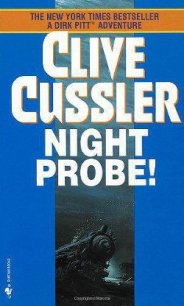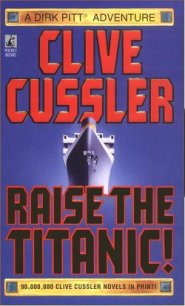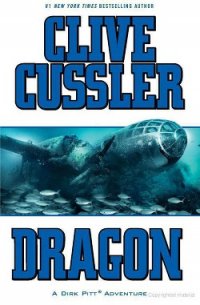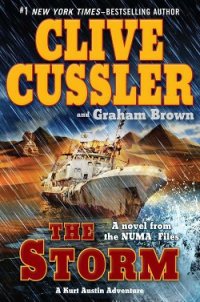Plague Ship - Cussler Clive (полные книги .TXT) 📗
“How you doing?” Max asked, trying to sound more gruff than normal to hide his guilt.
“One more scar to impress the ladies. Hux only needed eight stitches. I’m more worried about the Robinson. Talk about giving something the Swiss cheese treatment. There were eleven holes in the canopy alone. Okay, Stoney, I’m ready.”
Eric flipped UAV control to Adams so he could concentrate on getting the big freighter through the Corinth Canal.
First proposed during Roman times, a canal across the narrow isthmus was beyond their capabilities.
Being master engineers, the Romans built a road, which the Greeks called the diolkos, instead. Cargo was removed from ships at one end, and both freight and vessel were loaded onto wheeled sleds that were dragged by slaves to the other terminus, where the ships were refloated and reloaded. It wasn’t until the end of the nineteenth century that the technology had evolved to excavate a proper canal and save modern cargo vessels the one-hundred-and-sixty-mile journey around the Peloponnese. After a failed French effort, a Greek company took over and completed the canal in 1893.
At a little less than four miles long and only eighty-two feet wide at sea level, there wasn’t much to note about the canal except for one special feature. It was carved through solid rock that soared more than two hundred and fifty feet above the ships transiting through it. It was as though an ax had cleaved the living rock to create the narrow passage. A favorite tourist activity was to stand on one of the bridges that span the canal and peer down at the oceangoing ships far below.
Had it not been for the lights of the tiny town of Poseidonia, the view on the Oregon’s main screen would have looked as though the ship was racing toward a cliff. The canal was so narrow it was difficult to spot.
It was just a fractionally lighter slash on the dark stone. An occasional headlight swept along the main bridge a mile inland.
“You sure about this, Mr. Stone?” Max asked.
“With the high tide, we’ll have four feet clearance on each side of our wing bridges. I can’t promise I won’t scrape some paint, but I’ll get us through.”
“Okay, then. I’m not going to watch this on TV if I can get the live show. I’ll be up on the bridge.”
“Just don’t go outside,” Eric cautioned, a little uncertainty in his voice. “You know. Just in case.”
“You’ll do fine, lad.”
Max took the elevator topside and emerged on the dim pilothouse. He glanced aft, to check where crewmen were making preparations under the direction of Mike Trono and Jerry Pulaski, two of Linc’s best gundogs. Crewmen were also stationed at the bow.
The ship was steaming at nearly twenty knots as it made its approach. Though the canal is used today primarily by pleasure boats and sightseeing craft, any large vessel was towed through by tugs because of its tight confines and speed was limited to just a few knots. Max had supreme confidence in Eric Stone’s ship-handling abilities, but he couldn’t ignore the tension knotting his shoulders. He loved the Oregon as much as the Chairman and hated to see even a scratch mar her intentionally scabrous hide.
They passed a long breakwater to starboard, and the collision alarm sounded through every compartment on the ship. The crew knew what was coming and had taken the proper precautions.
Small bridges running along the coast roads spanned each end of the canal. Unlike the high truss bridges that towered over the water, these two-lane structures were just above sea level. To accommodate ships transiting the waterway, the bridges could be mechanically lowered until they rested on the seafloor so that vessels could pass over them. Once the ship was clear, the bridges were cranked back into place and cars could cross once again.
With her bow configured and reinforced to crash through sea ice, the Oregon slammed into the bridge, riding up on it in an earsplitting squeal of steel. Rather than crush the bridge, the tremendous weight of the hull snapped the locks that held it in place and it sank under the hull. The Oregon came back down with a tremendous splash that sloshed back and forth against the canal sides and dangerously slewed the ship.
Max looked up. It was as if the canal’s featureless rock walls reached the heavens. They dwarfed the ship, and, up ahead, the automobile and railroad bridges looked as light and delicate as girders from his boyhood Erector set.
The tramp freighter continued to charge through the canal, and, to Eric’s credit, he kept it dead center, using the Oregon’s athwartship thrusters with such delicacy that the flying bridges never once touched the side. Max chanced stepping out on one and walking all the way to the end. It was foolish and dangerous.
If Eric made a mistake, a collision at this speed would tear the platform off the superstructure. But Max wanted to reach out and touch the stone. It was cool and rough. At this depth, the canal remained in shadow for most of the day, so the sun never had the chance to warm it.
Satisfied, he hurried to the bridge just as the Oregon heaved slightly and the railing smacked the canal wall. Eric shifted their heading infinitesimally, so as not to overcorrect, and centered them once again.
“Linda’s van is just about at the New National Road bridge,” Gomez called over the intercom. “I can see the Chairman, too. He’s still got a good lead on the jeep chasing him.”
“On my way down,” Max said, and moved for the elevator.
THE DAMAGED TIRE finally shredded a quarter mile from the bridge, and they covered the distance riding on the rim, sparks shooting from the back of the van like a Catherine wheel. The sound was like fingernails across a chalkboard, something Linda hated more than any other noise in the world. She wasn’t sure what made her happier when they reached the center of the span: that they were almost home free or that the unholy shriek had ended.
Franklin Lincoln threw open the side door as soon as they stopped. He could see the Oregon fast approaching and heaved three thick nylon climbing ropes off the bridge. The ropes were secured around the van’s seats and through a frame member that was exposed in the cargo area. They uncoiled as they fell through space and came up just ten feet shy of the sea.
Linda quickly jumped out of her seat and donned her rappelling gear—harness, helmet, and gloves—while, two hundred feet below them, water frothed at the Oregon’s stern as reverse thrust was applied to slow her. With the power of her massive engines, she lost headway almost immediately.
Linc had already strapped himself into a harness used by tandem parachute jumpers, and, with Eddie’s help, they had clipped an unconscious Kyle Hanley to him. The three of them then secured themselves to the lines and waited for word from down below.
On the Oregon, crewmen at the bow grabbed the dangling ropes and guided them aft as the vessel crept forward, making sure they didn’t become entangled with the superstructure, communications antenna, or any of the hundreds of things that could snag them. As soon as the men reached the aft deck, Max ordered his people to go.
Never one to be bothered by heights, Linda stepped onto the guardrail and started lowering herself from the bridge. Eddie was on one side of her, and Linc, carrying Kyle, made his way down the other. They lowered themselves down the bridge’s underpinning girders, and then, suddenly, they were dangling two hundred feet over their ship, nothing holding them in place but the three-quarter-inch lines.
With a whoop, Linda shot down her rope like a runaway elevator. Eddie and Linc quickly followed, almost free-falling through space before using their rappelling harnesses to slow their descent. They touched down at almost the same time, and stood still so that their crewmates could unhook them from the ropes. The lines’ trailing ends were quickly knotted around cast-iron bollards bolted to the ship’s deck.




